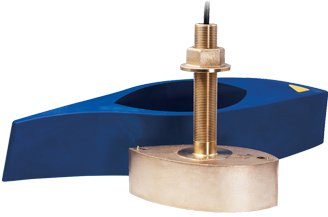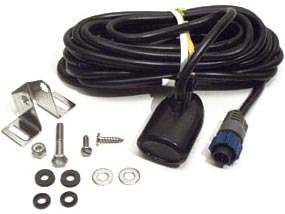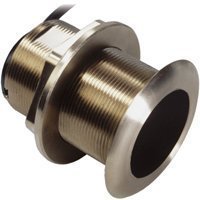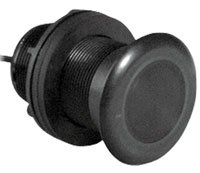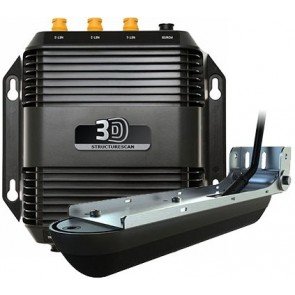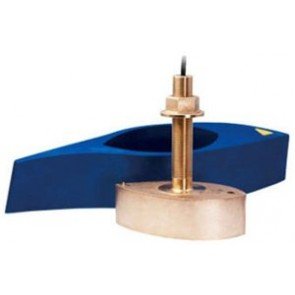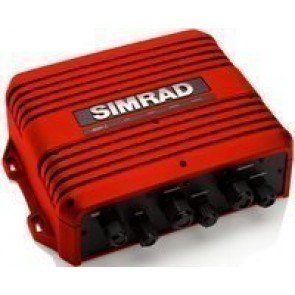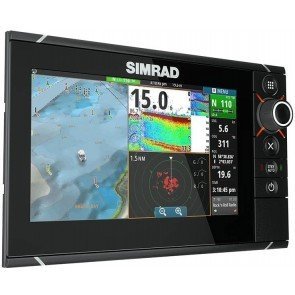Which is the Best Transducer for My Boat?
Here at CH Smith Marine, one of the questions we get asked the most is 'which Transducer will best suit my boat?'
With so many different options on the market – from single to dual Frequency, to CHIRP, In-Hull or Thru-Hull Transducers – the Range of choices can be overwhelming, and often it can be hard to know which kind of Transducer to turn to.
Once you find the right Transducer, though, it will change the Way you Fish forever.
While you're deciding, you'll need to ask yourself a few questions:
-
1. What is my budget?
-
2. How big is my Boat – and what shape is it?
-
3. What is my Hull made out of?
- 4. How wide a Beam Angle will I need?
-
5. Where will I be using my transducer? Will I be fishing in deep or shallow water, lakes, rivers, or the ocean?
-
6. How will I be mounting it?
Simrad have put together a handy guide to help you through the selection process – but here are some things to keep in mind as well:
Materials
Transducers are made of either bronze, plastic or Stainless Steel – each suiting a different kind of Hull.
A bronze Transducer is perfect for a wooden Hull, as it is built to endure and resist the effects of wood expansion.
Plastic Transducers are made for fibreglass, steel or alloy hulls. Stainless Steel will suit steel, alloy and fibreglass hulls.
Operating Frequency
Single Frequency Transducers work best in shallow coastal waters or in lakes and rivers, while dual Frequency provides better Resolution for deep sea fishing.
Transducers also come in Low (28 to 75kHz), (Medium 88 to150 kHz) and High (180 to 200 kHz) frequencies, with lower frequencies able to travel further through water, offering greater depth Resolution.
Beam Angle
The wider your transducer's beam angle, the more you will be able to see beneath your Boat.
The size of the Beam Angle can depend on a number of factors – such as the type of element in your Transducer, the configuration of the elements and your transducer's diameter and operating frequency.
For example, a 200 kHz Transducer may have either a wide (20°) or narrow (12°) Beam angle. A 50 kHz Transducer may have a 35° Beam angle, whereas dual-frequency or dual search transducers come with both narrow (eg. 12°, 200 kHz) and wide (eg. 35°, 50 kHz) Beam angles.
Typically a lower Frequency will give you a wider Beam angle. While a wider angle may give you a wider view of what's beneath your Boat, the Resolution won't be as sharp due to the transmitter's power being spread out. The narrower your Beam angle, the more concentrated the resolution – giving you a much sharper view of the bottom. Generally, a wide Beam Angle is best for fishing shallow to medium water depths, while narrow beams penetrate to deeper waters, but show less Fish and structure.
Output Power
The Output Power of a Transducer refers to the strength of the Sonar 'ping' the Transducer sends out into the water. This is measured in Watts RMS. Higher power increases your chances of getting a return echo in deep water or poor water conditions. It also lets you see better detail, such as bait Fish and structure.
Generally the more power you have, the deeper you can reach; and the easier it is to separate echoes returning from Fish and bottom structure from all the other noises the Transducer detects. For example, typically Transducers in the 100-200 watt Range will be fine for use in shallow water, while Transducers with up to 1,000 Watts or more are better for deeper water and drop-offs.
Mounting
There are four different types of transducers, each needing to be mounted a different Way.
Transom mounts are generally easier and cheaper to install. They suit tinnies and trailerable fibreglass boats, but work best in calmer waters. They are not recommended for operation at high speeds.
In-Hull Transducers handle high speeds much better. You also won't have to drill any holes in the Hull to install it. Their disadvantage, though, is that they have significantly less power due to the signal loss of transmitting through the Hull, and can only be used in fibreglass hulls.
Through-Hull Transducers are the best for clarity and performance, but cost more and are harder to install. If you need high speed bottom scanning, these units are worth their cost.
Tilted Transducers won't need a Fairing Block, and can be adjusted to suit your hull's Deadrise to keep the transducer's Beam directed straight down.
Extra Capabilities
Transducers often also come with a set of extra abilities to help provide the very best fishing experience.
For example, Transducers with CHIRP technology offer superior, high Resolution Sonar with increased Target Separation and reduced Noise.
A lot of Transducers offer Down, Side and 3D Imaging, allowing you a much more detailed view of what's around your Boat.
Similarly, ForwardScan sonar allows you to see what's >Ahead of your Boat and navigate your Way through a lot more safely.
With careful consideration and the right advice, you can be sure to find a Transducer that will put you in good stead for years to come, and ensure a lifetime of great fishing.
For more tips, check out our transducer installation guide or the video at the top.
If you're after further advice, why not give us a call or visit us in-store at CH Smith Marine? We have been providing expert advice on Transducers for more than 58 years.
